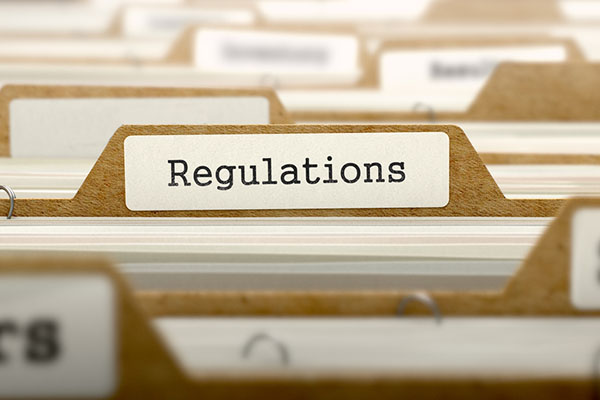Change is coming: standards and regulations in the age of DERs
New opportunities and new challenges. Thanks to the rapid growth of distributed energy resources (DER), electric cars, and the IoT, electricity providers are encountering plenty of both. All around the world, utilities are investigating or transitioning to a distributed grid to meet government and market demands for renewable energy. For the most part, they’re doing it without up-to-date regulations and technology standards – and that’s one of the challenges.
As the grid evolves from centralized to decentralized distribution, the electricity power sector will see a number of changes. Specifically:
- Utilities will update their business models to incorporate new energy sources and services
- Regulations and legislations will be set to enable fair competition
- New standards will be implemented for:
- Cybersecurity, protection and control
- Device connectivity
- Communication
- Interoperability
Updating regulations for decentralized distribution
Reliability is everything in power distribution. Historically, regulated utilities have used a rate-based mechanism as well as continual investments in people, equipment, and technology to ensure a reliable power supply. As adoption of grid-edge power sources and loads increase, it will become exponentially more complex to monitor, control, track and restore outages, and analyze/optimize the distribution network for optimal reliability.
All the same, it’s a challenge utilities are willing to take on. This is perhaps best illustrated by their response to the New York State power outage that saw 590,000 customers lose power for up to 10 days in March 2018. While government representatives and regulators have called for accountability and launched an investigation into the affected utilities’ preparation and response, utilities in general have focused on preventing future occurrences. Specifically, utilities are focused on enhancing resiliency and improving outage responses by reinforcing the distribution grid through automation and DERs.
Many jurisdictions are already in the process of modernizing their grid. Regions with ambitious renewable energy mandates are furthest along, having established regulations and incentives to encourage utilities to invest appropriately to meet regulated requirements and deliver shareholder value. The majority of utilities around the world, however, lack clarity on how regulations will affect decentralized grid operations. It seems likely that they’ll have to wait for regulators to watch frontrunning markets and apply the lessons learned.
Can performance-based regulation assist with the transition?
Take performance-based regulation (PBR), for example. With a PBR model, utilities would earn a rate of return based on specific performance objectives such as quality of service, system reliability, and innovation. The Michigan Public Service Commission recently assessed the feasibility of integrating PBR into the current cost-of-service regulatory model. It examined six jurisdictions with transmission and distribution utilities to evaluate methods for:
- Estimating the revenue required by utilities to operate
- Increasing the time between rate cases
- Setting performance incentives and penalties
- Enabling profit sharing for consumers and utility stakeholders while managing the risk for adopting innovative technologies
The Commission concluded that the PBR model used in other jurisdictions could be adapted on a jurisdiction-by-jurisdiction basis to augment existing regulatory models. From a regulatory standpoint, this is a promising option to encourage utilities to evolve their business model and embrace a decentralized grid.
Modernizing industry standards to address current and upcoming changes
Regulations are only one part of the equation. Standards are the other. With the rise of DERs, the industry needs to update and harmonize standards for technology, interoperability, security, and data privacy. Some work has already been done or is in progress:
- The new IEEE 1547-2018 standard for interconnection and interoperability of DERs and interfaces with electric power systems was released in February 2018. At five times the length of the last revision, this much-needed standard document is far more comprehensive in terms of specifications.
- The US Department of Energy is sponsoring multi-million dollar programs to facilitate collaborative R&D between national labs, utilities, industry, and academia on technologies, performance, and interoperability requirements.
- The IESO in Ontario, Canada is engaged with the 70 local distribution companies to enhance coordination and interoperability standards for the province’s long-term energy plan. The council is focused on:
- Ensuring reliable data exchange for maximum visibility and access to DERs
- Developing a better understanding of how DER operating conditions will impact the grid’s energy balance
- Identifying additional values that could improve operational reliability and resiliency
- Across North America, utilities are engaged in varying degrees on the NERC-CIP cybersecurity standard. Technology considerations span from endpoint encryption to full operational situational awareness of the grid infrastructure. There are still grey areas in terms of data ownership and privacy requirements, particularly around the access and usage of consumer meter and third-party DER data.
There’s no doubt that DERs offer great potential for peak demand management, resiliency, power quality management, and advanced grid support such as imbalance and reserves management. To extract multi-tier values, however, utilities will need an effective regulatory framework, as well as the operational readiness to manage a decentralized grid.
What are your thoughts on the state of regulations and standards in the context of a decentralized grid? Let’s keep the discussion going – share your thoughts below.
Young Ngo

